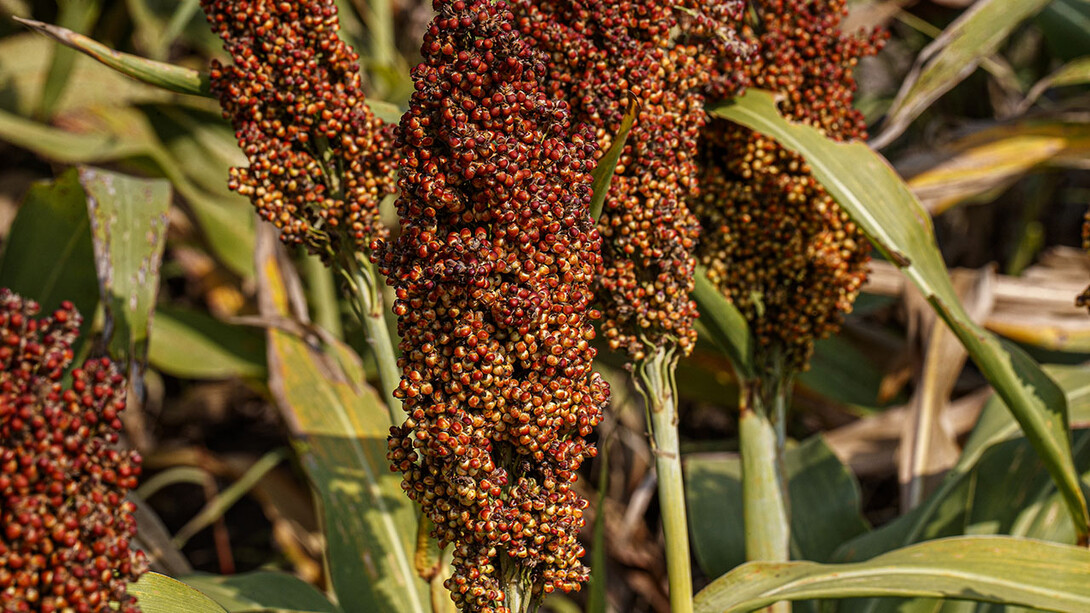
In summer 2021, a group of agricultural education teachers decided to see how well the farm management concepts they were teaching in their classes translated to real life.
The instructors, who all teach at school districts in Educational Service Unit 16, divided into two teams and signed up to participate in the annual Testing Ag Performance Solutions program — TAPS for short — at the West Central Research, Extension and Education Center in North Platte.
The TAPS program, which started in 2016, brings together teams of farmers, agronomists, students, state agency employees, Nebraska Extension professionals and others who direct the planting and management of corn or sorghum on a plot at the research center.
Throughout the competition, the decisions that participants make affect the yield, price and ultimately the profitability of their plot. Participants decide what kind of hybrid to select and crop insurance to purchase. They make decisions about planting population, their marketing strategy and the timing and quantity of irrigation and fertilizer. They get some help from technologies, such as sensors that measure the amount of water in the soil and cameras that measure the amount of nitrogen in crop leaves. In the end, teams are ranked on who is the most profitable, with teams who use water and nitrogen most efficiently being recognized.
Many of the teachers were intimidated by the number and technicality of the decisions they needed to make, but that’s part of the beauty of the TAPS program, said Chuck Burr, extension education at the West Central Research, Extension and Education Center.
“Working with the teachers in making the day-to-day decisions was what we were hoping for by inviting them to be part of the competition,” Burr said.
The teachers, in turn, applied the same logic and principles they try to impart to their students, and they surprised themselves with the result.
“We fared pretty well for not knowing much,” said Evey Choat, agricultural education instructor at McPherson County Schools.
The teachers’ main takeaway from the program, though, was how beneficial it could be to their students.
“It’s one thing to teach students ‘plants need these nutrients,’ but when students make decisions about how much nitrogen to apply,” it gets real, said Seth Burge, who teaches at Perkins County.
So this summer, the teachers returned to West Central, not to participate in the TAPS program, but to build a curriculum for high school ag-ed classes around it in collaboration with center faculty and staff.
It wasn’t an easy process, said ESU 16 Administrator Deb Paulman. Agriculture is complex, and so are the precision agricultural tools that participants in the TAPS program use to aid in decision making. The teachers wanted to empower students to make decisions without overwhelming them with information. At the same time, the complexity is part of the magic of TAPS — and of agriculture in general, she said.
“The way that kids learn to make decisions is by making decisions,” Paulman said. “This is like a taste of the real world. It’s a real experiment.”
After their own experience in the program and conversations with farmers, Husker researchers and other TAPS participants, the teachers worked to develop curriculum modules for their students around two of the six major decisions that TAPS participants make. The first two modules — one on hybrid seed selection and seeding rate and another on nitrogen application — will be piloted in several Nebraska high schools during the 2022-23 academic year. The teachers will then evaluate which aspects of the curriculum worked well and which ones could be improved and make adjustments accordingly, she said. Several school districts in other parts of the state have already expressed interest in adopting the program after the pilot year.
It’s been exciting to see so many groups work together to adapt the TAPS program for high school, said Tammy Mittelstet, who coordinates educational pathways and statewide educational partnerships for the College of Agricultural Sciences and Natural Resources at Nebraska. In particular, she said, it has been gratifying to see so many different groups — farmers, ESUs, Husker faculty and staff, teachers and school administrators, among others — work together to make a program they believe in available to high school students. In Nebraska, where one in four jobs is related to agriculture, it is very likely that the skills they learn through the TAPS curriculum will be skills they use later in their careers.
“The most important thing is that we all recognize we are here for the same reason,” she said. “We all want a successful economy, we all want successful students and we all want a successful workforce.”







